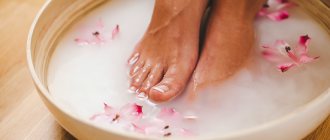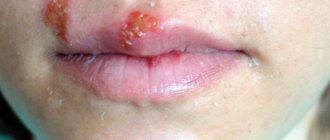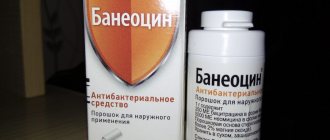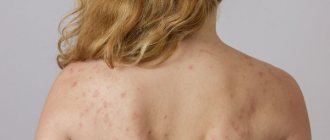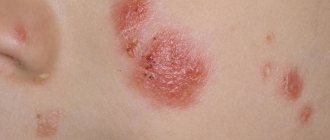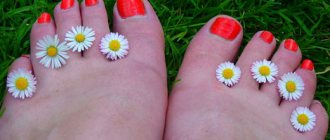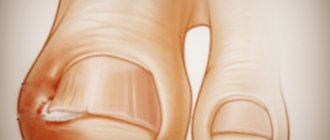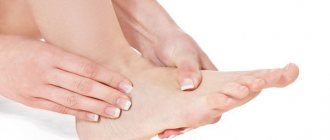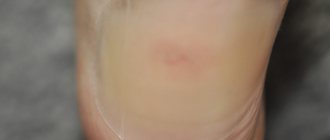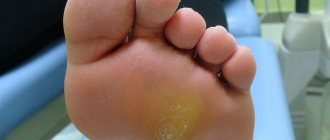Soft callus
A bubble filled with liquid appears on the little finger.
© shutterstock
Causes
The appearance of calluses on the little toe is caused by friction when wearing hard or uncomfortable shoes. Due to friction, the upper layer of the epidermis peels off and serous fluid accumulates in the resulting cavity.
Symptoms
The callus on the little finger looks like a soft bubble that hurts when pressed. Forms quickly, within a few hours.
Treatment
Before considering how to treat soft calluses, it’s worth dwelling a little on what not to do.:
- Remove the top layer of the bubble. Removing the swollen layer of skin creates an open wound and increases the risk of infection of the wound surface.
- Cauterize with alcohol-containing substances (brilliant, iodine). Alcohol preparations dry out the dermis, causing cracks to appear.
It is not recommended to open a swollen blister on the little finger. If the formation is large, then it is possible to puncture it with a sterile needle and remove some of the liquid.
Treatment is carried out using antibacterial ointments. Can be used :
- Levomekol;
- Streptocide;
- Tetracycline.
The ointment is applied to a sterile napkin, and the bandage is secured to the little finger with a plaster. Treatment of calluses is carried out with clean hands.
Who to contact
It is recommended to visit a dermatologist when, in addition to pain, there is itching, severe redness, or the appearance of pus in the callus area. In other cases, treatment is carried out independently.
ethnoscience
plantain leaf
When the callus is small in size, it is quite possible to deal with it using traditional methods, without resorting to expensive ointments and medications. Many of them have been tested by a large number of generations of people who have gone through all this. Next, we consider effective treatment methods:
- Salt water bath. Take one tablespoon of salt for every liter of boiling water. However, it is not recommended to keep your feet in it for a long time; sometimes it is enough to simply rinse them in such water.
- Potassium permanganate can be used for baths. A little potassium permanganate powder is poured into the water so that the liquid turns out to be pale pink. You can keep your feet in it for no longer than 7-10 minutes.
- Aloe juice has excellent antiseptic and wound-healing properties. A small piece of leaf is enough, which is attached to the wound with a bandage.
- If there is no open wound, then tomato juice, which must be regularly lubricated with dropsy, speeds up the recovery of the disease.
- A well-washed plantain leaf attached to a wound or wet callus is an excellent treatment aid.
- Horse sorrel has excellent calming properties. To do this, the leaves need to be washed and chopped well. Apply the paste to the damaged part of the leg.
- Mix one tablespoon of tea tree oil and three vegetable oils. You can wipe the wet callus with the resulting mixture up to four times a day. This ointment has not only a wound-healing effect, but also antibacterial properties.
- Raw potatoes are grated, and the resulting pulp is poured onto gauze and applied to the callus. The gauze is attached to the leg with a bandage and left overnight, or even for a day. The main thing is to change the solution once a day.
- Chamomile root has a healing and drying effect. For a speedy recovery, it is recommended to use baths with this medicinal plant.
Dry callus
A dry callus on the little finger looks like a small lump on the skin.
© shutterstock
Causes
Constant pressure on an area of skin provokes the appearance of dry calluses. From pressure, the upper cells of the epidermal layer become keratinized and a compaction appears.
If you do not remove the keratinized area, the callus will gradually invade deeper layers of the skin and will be more difficult to remove.
Symptoms
In the early stages there is almost no pain. A person characterizes his sensations as unpleasant discomfort that appears when wearing tight shoes.
If the resulting condition was ignored, then pain appears as the keratinization spreads deeper into the epidermis . A dry callus on the little toe hurts not only from the pressure of shoes, but also when walking. The pain is moderate, aching in nature.
Treatment
You can remove keratinization at the initial stage at home. To do this you will need:
- Steam your legs. You can add a little liquid soap or a drop of aroma oil to a hot water bath.
- Clean off keratinization with pumice. This must be done carefully, trying not to damage healthy areas of the skin.
You can get rid of a callus on your little finger using this method in a few days.
You can purchase a Salipod patch or other similar products to remove calluses. The substances contained in the patches soften the dead cells, and then they can be easily removed with pumice. Using pharmaceutical products does not cause pain. If your little finger hurts after applying the patch, this means that the drug has come into contact with healthy areas of the skin.
Deep calluses that cause pain and discomfort cannot be eliminated using the methods listed above and you will have to contact a specialist. To remove it can be used :
- a liquid nitrogen;
- laser.
Both proposed methods will allow you to get rid of deep, dry calluses in 1 session. During the procedure, the patient does not feel pain.
Who will help
For superficial formations, medical attention is not required; keratinization is eliminated on its own. If deep calluses appear, you should consult a dermatologist or visit a beauty salon.
Treatment
Calluses need to be treated if they are located on a mobile joint of the toe. Where it creates unpleasant sensations while wearing shoes. In this case, the tumor is removed by surgical intervention. But surgeons try to resort to such a decision as rarely as possible. This is explained by the fact that the process of tissue proliferation occurs slowly, in the presence of inflammation. The surgeon’s actions lead to an intensification of the inflammatory process, which can lead to an even faster rate of callus growth. The main goal of treatment is to inhibit the process of tissue proliferation.
Medical assistance in solving a delicate problem
For non-surgical treatment, it is advisable for the patient to stay in the hospital. The length of stay directly depends on the severity of the disease, and can range from a month to two. The affected area is fixed so as to exclude the influence of temperature on it and the load is removed. To form healthy bone tissue, the specialist prescribes a diet for the patient.
As part of the treatment complex, the patient is prescribed therapeutic procedures, as well as physical therapy in the form of applying heat to the affected areas. Magnetic therapy is considered the most popular and proven method. Special magnets are applied to the affected areas. An alternative is ultrasound frequency therapy and electrophoresis, which help achieve excellent results. Thanks to the procedures performed, the regeneration of new bone tissue occurs faster.
Lack of timely treatment delays the process of recovery of the affected area.
Callus
Outwardly it looks like a dry one, but a point (rod) is visible in the center.
© shutterstock
Causes
The rod is formed around a foreign body that has gotten under the skin (a splinter, a plant thorn, metal shavings). Trying to isolate a foreign object, the body creates a dense layer of dermal cells around it.
Walking or pressure on the skin provokes the growth of the rod deeper into the tissue, and an area of keratinized cells appears around the rod formation.
Symptoms
At an early stage, education will not be a concern . There is no pain, the person feels something pressing or stabbing under the skin.
The pain of a callus on the little finger appears when the rod, penetrating into the deep layers of the dermis, irritates the nerve endings. If the rod is located next to the nerve, then the pain will be constant, intensifying when walking and subsiding slightly at rest.
When there are no nerve processes near the callus formation, it hurts only when moving or wearing hard shoes, and during rest moderate discomfort is felt.
Treatment
It is difficult to get rid of a dry callus on the little finger on your own. Depending on the size of the callus formation, the following is used :
- Steaming and removal with pumice. The method is effective when the rod is in the upper layers and the keratinization has not reached a large size. When the callus on the little toe starts to hurt, this method will not help. A rod that has penetrated into the deep layers of the dermis cannot be removed mechanically.
- Cauterization with laser or cold (liquid nitrogen). Allows you to quickly remove the keratinized area. But with deep lesions, part of the core may remain inside the dermis, and the callus on the little finger will appear again.
- Surgical removal. This method is almost never used on the little finger. During the operation, the ingrown callus and part of the surrounding tissue are excised.
If there is a keratinization on the little finger with a point in the middle that hurts, home methods will not help. Removal by specialists will be required.
Who treats
Conservative therapy is carried out by a dermatologist. If surgical removal is required, the patient is referred to a surgeon.
Calluses on the little finger vary in appearance and structure. But if the formation causes pain, then before starting removal you need to consult a doctor.
© shutterstock
Pain in the little finger is not always caused by a callus
A familiar situation is when a callus on the little toe hurts, despite the fact that the keratinization is small and can be easily removed with pumice. This is due to the fact that pain is caused not by callus formation, but by other reasons :
- Arthritis. Inflammation of the joint tissue causes severe pain. The joint of the little finger swells, hyperemia appears.
- Osteoporosis. Pain when walking occurs due to decreased bone density. The disease first affects large joints and then spreads to small ones. If a person has previously been diagnosed with osteoporosis, then pain in the little finger may occur due to the spread of the disease to small joints.
- Bursitis. Inflammation of the joint capsule of the little finger causes severe pain. Sometimes the finger hurts so much that the person cannot step on the foot.
People believe that the callus is very painful and tries to get rid of the keratinization, not paying attention to other changes on the finger or considering swelling and hyperemia to be a consequence of callus. Such inattention to one’s condition leads to the fact that diseases of the little finger become chronic.
When you need a doctor's help
Most people consider the complaint: “a callus on my little finger hurts” to be an insufficient reason to seek medical help:
- Strong pain . The appearance of severe pain discomfort indicates pathological irritation of nerve receptors.
- External changes of the little finger . Swelling and hyperemia do not occur with keratinization of the skin or the formation of a callus.
- Discrepancy between the size of the callus and the symptoms encountered. When severe pain occurs with small keratinizations, the cause of the pain will not be a callus, but diseases of the bones or joints.
- Unsuccessful home treatment . Soft calluses can be easily cured at home, but it is not always possible to remove dry or core calluses yourself. If after several sessions of mechanical cleansing with pumice a positive result is not achieved, you should visit a specialist.
A callus on the little finger may hurt due to deep keratinization of the skin and irritation of nerve receptors. But the pain is always moderate and goes away with rest. But we should not forget that callus pain can “mask” a disease of the joints of the bones or joints of the little finger. To identify the cause and get rid of callus formation faster, you need to consult a specialist.
Interesting4Not interesting1
Effective pharmaceutical drugs
If a callus has formed on the surface of the little toe, the first thing you need to do is get rid of the shoes that caused it. To isolate the problem area and prevent infection of the injured epidermis, it is recommended to use a regular bactericidal patch. Small calluses quickly go away on their own and do not require any additional intervention.
When using bactericidal patches, they should be changed regularly as soon as peeling occurs.
If a wet callus bursts and a wound forms, measures should be taken to prevent it from becoming infected. To do this, you can use any pharmacy antiseptic - Chlorhexidine, Streptocide, hydrogen peroxide. It is not recommended to use iodine, brilliant green, or alcohol-containing drugs for treatment.
You can speed up the healing of injured skin with Salicylic ointment or Levomekol. They are applied to a bandage and fixed with adhesive tape, changing the dressings regularly.
After 10-15 days of intensive treatment, only dry skin usually remains on the finger. It can be removed with pumice stone after steaming your feet. After such a procedure, the surface is lubricated with a moisturizing cream and, if necessary, all manipulations are repeated the next day.
